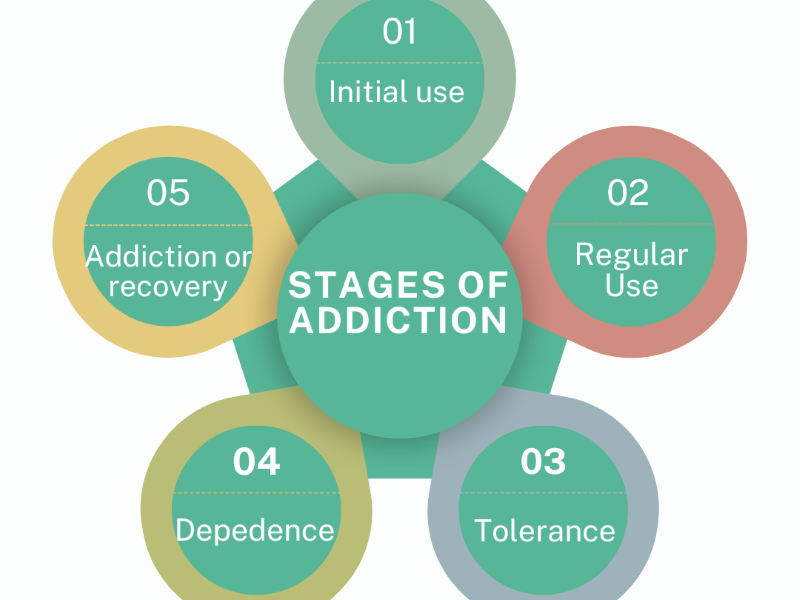Addiction is a chronic disorder that affects millions of people worldwide. It’s a progressive condition that can start with a single choice(NIDA, 2011). While addiction manifests differently for everyone, there is a common pattern in the progression of addiction that can be understood through five distinct stages. These stages describe how an individual transitions from occasional use of a substance or behaviour to full-blown addiction.
Understanding these stages is crucial for early intervention and treatment.
Stage 1: Initial Use
The first stage of addiction begins with initial use, which refers to the first time an individual engages in substance use or a potentially addictive behaviour. For many, this stage might not seem significant, as the use is often casual or recreational. However, the first experience with a substance sets the stage for what might come later. Initial use is influenced by various factors, including curiosity, social pressure, stress relief, or even medical necessity. (T SAAH,2005) The risk of moving beyond this stage increases if the initial experience is perceived positively, as the person may seek to repeat it.
Stage 2: Regular Use
As initial use gives way to regular use, the individual starts to incorporate the substance or behaviour into their daily routine. The individual may start to use the substance more frequently, though they are often still in control of their use. They may begin to rely on it as a coping mechanism for stress, anxiety, or other emotions. At this stage, they may start to experience some negative consequences, but the perceived benefits outweigh the risks.
Stage 3: Tolerance
As an individual continues to use the substance or engage in the behaviour, their body and mind begin to adapt, leading to the third stage: tolerance. Tolerance occurs when the individual needs increasing amounts of the substance to achieve the same effect that they initially experienced. For example, someone who drinks alcohol might find that they need to consume more drinks to feel the same level of intoxication. Tolerance is a significant indicator of developing addiction, as it reflects changes in the brain’s chemistry. The person’s body starts to depend on the substance or behaviour to function normally, leading them to escalate their use. This stage often goes unnoticed by the individual, who may rationalize their increased use as normal or necessary.
Stage 4: Dependence
This stage signifies a more serious progression of the condition. Addiction takes hold. The individual’s life becomes centred around the substance or behaviour, causing significant impairment in relationships, work, and overall well-being. They may experience intense cravings, loss of control, and continued use despite negative consequences. At this point, the individual’s body and mind have become so accustomed to the substance or behavior that they experience withdrawal symptoms when not using it.
Stage 5: Recovery or Consequences
The final stage presents two paths: recovery or continued downward spiral. With support and treatment, individuals can embark on the journey of recovery, rebuilding their lives and regaining control. Alternatively, without intervention, addiction can lead to severe physical, emotional, and social consequences, even death.
Understanding the 5 stages of addiction can help individuals and loved ones recognize the signs of addiction and seek help before it’s too late. Remember, addiction is a treatable condition, and recovery is possible with the right support and resources.
References
NIDA “Drug misuse addiction” (2011)
Saah, T. The evolutionary origins and significance of drug addiction. Harm Reduction J 2, 8 (2005).

